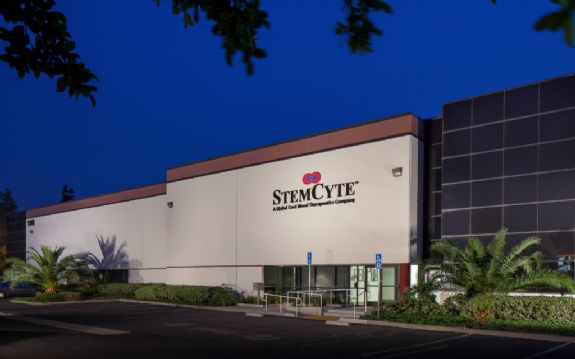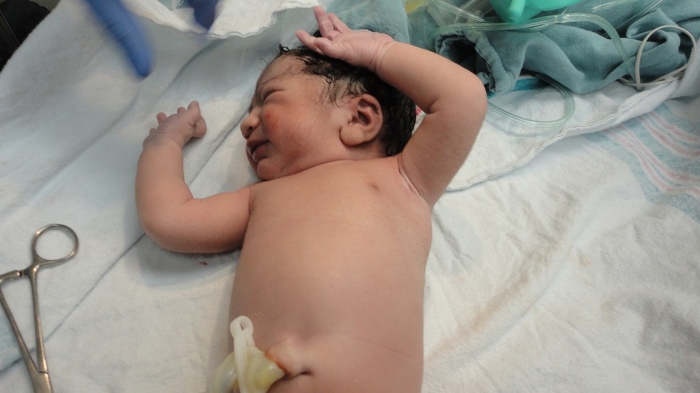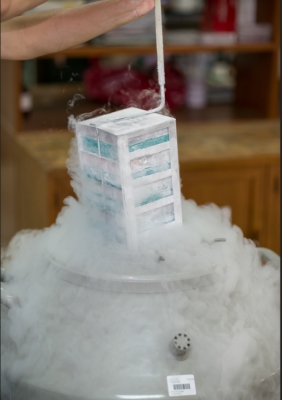StemCyte
StemCyte
StemCyte is one of the leading umbilical cord blood banking systems present on the international level, with locations in the USA, India and Taiwan. SyemCyte represents a combination of a public cord blood banking facility and a private umbilical cord blood bank.
To compare StemCyte with other cord blood banks, see our cord blood banking reviews article. To discover which are the preferred features for a cord blood banking institution, go to this article. In general, this company does not stand so well when compared with thers such as ViaCord, Americord, or CBR, to name a few.
The milestone of this institution, StemCyte, is to provide a diverse and global umbilical cord blood pool from which both public and private users would have therapeutic benefit. StemCyte has reached the highest diversity of umbilical cord blood units and has provided umbilical cord blood to a significant number of patients worldwide. Approximately two thousand donated umbilical cord blood units were released for therapeutic use from the public bank directly to the hospitals around the world. A successful merging of private and public cord blood banking allows StemCyte to provide the highest standards in the field of umbilical cord blood collection, storage and release for therapeutic use.
The diversity and an impressive number of umbilical cord blood units stored in the facility give StemCyte the ability to cooperate with leading global experts, and some public cord blood banks, and create an Advanced Therapeutics initiative, which resulted in clinical trials investigating the role of cord blood in the treatment of thalassemia, spinal cord injury, and stroke. No other company possesses in our cord blood banking reviews such business model, consisted of three major components: private and public blood banking with substantial potential for investigating new modalities of umbilical cord blood use.

Hybrid Model: Public and Private
The key advantage of StemCyte is the conjunction between public and private umbilical cord blood banking, international presence and a vast investigational potential. This allows StemCyte to cooperate with international experts in the field of umbilical cord blood banking with a final goal to expand the therapeutic use of umbilical cord blood beyond the current approved therapeutic indications.
Research in the field of thalassemia, stroke and spinal injury has provided promising results and opened a path towards the understanding of the umbilical cord blood potentials and broadening of cord blood therapeutic use. StemCyte possesses significant experience in releasing the units for therapeutic use on children and adults. As aforementioned earlier, over 2000 cord blood units were released in order to successfully treat various severe and life-threatening diseases including cancer (leukemia, lymphoma, multiple myeloma), blood disorders (thalassemia, scale cell anemia, Fanconi anemia) and conditions of immune deficiency.
Umbilical Cord Blood Processing by StemCyte
Standard umbilical cord blood processing method eliminates both plasma and red blood cells from the collected sample, leaving the unit volume of approximately 25 mililiters. This method is most commonly used in UCB processing practice.
StemCyte uses the MaxCell processing method in which only plasma is removed and red blood cells left in the final sample. This modality has shown to provide a higher number of Total Nucleated Cells (TNC). The total nucleated cell number is directly proportional to the number of stem cells in the collected sample, meaning that MaxCell processing method ensures an increased number of stem cells per sample when compared with standard processing methodology.
Accreditations for StemCyte
FDA registered
Food and Drug Administration (FDA) has recognized the high operational standards of StemCyte including the HLA typing laboratory that provides prompt tissue typing when an urgent transplant is needed within the hospital setting.
Foundation for the Accreditation of Cellular Therapy (FACT)
FACT believes that high quality of services encompasses a clinical aspect of cord blood banking, as well as laboratory aspect that includes processing and storage of UCB units. In order to receive a valid accreditation, both aspects of cord blood banking have to be evaluated and approved.
StemCyte was the first cord blood institution to receive FACT approval and recognition in all three activities including unrelated and related allogenic transplantation and autologous stem cell transplantation. StemCyte met all the criteria for cord blood banking – sampling, handling, testing, storing, selecting and releasing of units for transplant. The prestigious FACT award was received in 2006. StemCyte is the only institution approved by FACT for autologous transplantation. This information is updated at the end of 2018.
AABB Accredited
AABB is well recognized by its internationally accepted standards in the fields of blood banking, transfusion and cellular therapy laboratories including cord blood banking facilities. StemCyte initially received accreditation from this institution in 2002 under the AABB standards for cord blood management and banking. Currently, StemCyte is accredited by AABB under the 1st edition of the Standards for Cellular Therapy Services.
LifeSaver Guarantee
StemCyte implemented a new level of added security to cord blood banking. If the stem cells were not engrafted following transplantation procedure, StemCyte was refunding all the fees paid for banking services including an additional reimbursement. Currently StemCyte is not doing this anymore, so there is a disadvantage in comparison with its competitors that offer reimbursements and compensations.
Another practice abandoned by StemCyte was the following: a search for another compatible cord blood unit was conducted, and if an acceptable HLA match was available, the unit was released for transplant. In the situation when the collecting unit iwas being damaged by transport, processing or storage and if the family decided to stay enrolled in the program, StemCyte was also conducting a search for compatible alternative cord blood product and releasing it for transplantation for a child or a family member, if required.
Stable Temperature Collection Kit
Maintenance of the stable temperature of the umbilical cord blood sample throughout the transport is essential for the viability of stem cells. Better protection from temperature oscillations ensures the safety of collected stem cells. StemCyte uses the thermally insulated collection kit that maintains the optimal temperature of cord blood sample during transport. This is one of the very few kits in the industry, but not the only one, that ensure a stable temperature of cord blood.
The collection kit is heavily insulated and tested for thermal-protection in various outer temperatures. Collection kit meets all the regulatory requirements for successful collection and transport of umbilical cord blood and has undergone clinical trials to meet the recommendations provided by the FDA. The kit allows both cord blood and cord tissue to be collected.
Research done by StemCyte
In 2007, StemCyte in collaboration with Prof. Wise Young submitted a patent application for the combination of cord blood and lithium that was noted to promote the secretion of several neurotropic agents responsible for stimulating the body’s own stem cells leading to growth and repair of nervous tissue.
In 2008, StemCyte introduced a new patent using umbilical cord blood stem cells to treat brain damage caused by stroke or traumatic brain injury. StemCyte also worked on a specific method that would enable the cord blood stem cells to be resistant to HIV infection.
In 2010, a Phase II clinical trial that investigated the use of UCB stem cells in the treatment of chronic stroke was completed. The results demonstrated a success rate of approximately 85%. Spinal cord injury and the treatment of this condition using stem cell transplantation was also investigated in Phase I/II clinical trial sponsored by StemCyte. The development of regenerative medicine was also highly influenced by StemCyte back in 2013 when a program was launched to investigate the therapeutic potential of mesenchymal and epithelial cells. The goal of this program was to expand the therapeutic use of umbilical cord blood by storing the aforementioned cell types. When the therapeutic potential of these cells was recognized by the experts, around 600 clinical trials were launched with the objective to investigate the use of mesenchymal stem cells in the treatment of heart disease, autoimmune disorders, diabetes, liver and kidney diseases.






